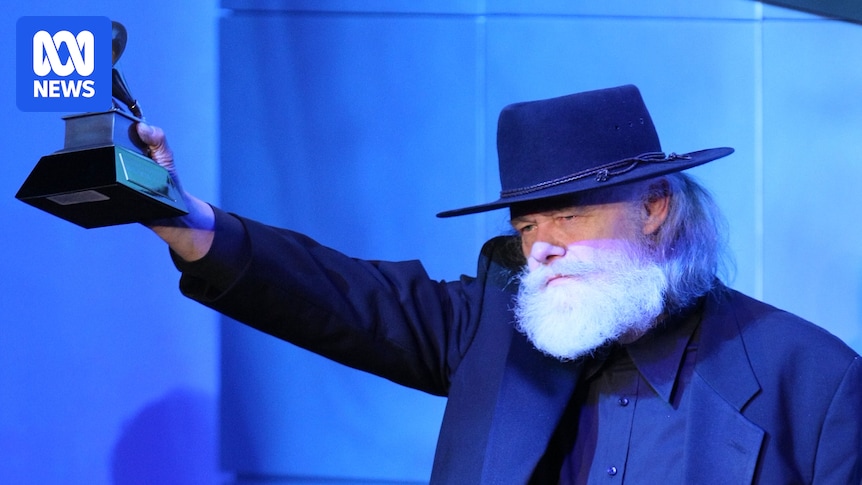Garth Hudson, influential Americana musician and last surviving member of the Band, dead at 87

Garth Hudson, the organist and multi-instrumentalist whose wizardry enhanced some of the best-known songs of 1960s and 1970s rock group the Band, including ‘Up on Cripple Creek’, ‘Chest Fever’ and ‘Ophelia’, died on Tuesday at age 87. He was the last surviving member of the influential group.
Hudson, a Canadian who died in Woodstock, New York, where he had lived for years, was hailed as one of the greatest keyboardists in rock music. He also played saxophone, accordion and other instruments for the Band and Bob Dylan, who the group acted as a backing band for throughout the mid-1960s and 1970s.
In a social media post on Tuesday, the Band called him “a musical genius and cornerstone of the group’s timeless sound”, adding, “Rest easy, Garth”.
The Band, made up of four Canadians and an American, existed from 1960 to 1976, recording nine albums, before reforming for three more in the 1980s and 1990s.
The Band — from left to right: Garth Hudson, Levon Helm, Richard Manuel, Robbie Robertson, Rick Dank — pose for a photo circa 1969. (Michael Ochs Archives/Getty Images)
Their first two albums, 1968’s Music from Big Pink and 1969’s the Band, are considered among the greatest in rock history. The group drew from folk, blues, country and soul influences, and they were pioneers of what is now called Americana music.
The Band also feature on three of Dylan’s albums, including the lauded, oft-bootlegged Basement Tapes, and Dylan appears on multiple Band tracks, most notably ‘Tears of Rage’ and ‘This Wheel’s on Fire’.
The Band first disbanded after the release of 1977 album Islands, and stopped touring the year prior with a farewell concert in San Francisco titled The Last Waltz. The farewell was captured by Martin Scorcese in a 1978 concert film of the same name, and featured many guest performers including Dylan, Eric Clapton, Joni Mitchell, Ringo Starr and Neil Young.
The Band (Hudson pictured top left) perform during The Last Waltz with guests Neil Diamond, Joni Mitchell, Ringo Starr, Neil Young, Van Morrison, Bob Dylan and more. (Ed Perlstein/Redferns/Getty Images)
In addition to Hudson, the group’s members included fellow Canadians, guitarist and songwriter Robbie Robertson, bassist Rick Danko and pianist Richard Manuel, and US drummer Levon Helm.
Lead vocals were shared by Danko, Helm and Manuel. The Band reunited, without Robertson, in the 1980s before breaking up in 1999 after Danko’s death. Hudson was the last surviving original member of the Band: Manuel died in 1986, Helm in 2012, and Robertson in 2023.
The Band was inducted into the Rock & Roll Hall of Fame in 1994, and was also awarded the Grammys’ Lifetime of Achievement Award in 2008. They are also celebrated in Canada, inducted into the Juno Awards’ Music Hall of Fame in 1989, and given a Walk of Fame star in Toronto in 2014. As an individual, Hudson has also been inducted into the Blues Hall of Fame, the London Music Hall of Fame and, most recently, was awarded an Order of Canada in 2019.
Honey Boy
Eric ‘Garth’ Hudson was born in Windsor, Ontario, on August 2, 1937. The classically trained musician grew up in London, Ontario, where he played organ in his uncle’s funeral parlour.
Garth Hudson (pictured here in 1969) was perhaps the Band’s most recognisable member, due to his bushy beard.
(David Attie/Getty Images)
When Hudson, in 1961, joined the group that would eventually become the Band, he insisted that the other members pay him $10 a week for music lessons. This made the arrangement more palatable to his parents.
At first, the group backed rockabilly singer Ronnie Hawkins and was known as the Hawks. Hudson was an odd fit initially, Robertson wrote in his 2016 memoir.
“Garth was quiet and clearly a bit offbeat … (But) he played brilliantly, in a more complex way than anybody we had ever jammed with.”
Helm recalled:
“We called Garth ‘H.B.’ among ourselves. This stood for ‘Honey Boy,’ because at the end of the day, after the other instruments were put away, Garth was still in the studio sweetening the tracks, stacking up those chords, putting on brass, woodwinds, whatever was needed to make that music sing.”
The croaking-frog sounds on the 1969 song ‘Up on Cripple Creek’ were Hudson playing the clavinet through a wah-wah pedal. He contributed all the brass and woodwinds on the song ‘Ophelia’. On the Band’s most famous song, ‘The Weight’, Hudson played piano.
But his calling card was the 1968 song ‘Chest Fever’, a monumental organ workout that began with a reference to Bach’s ‘Toccata’ and ‘Fugue in D Minor’. Other the Band songs that showcased Hudson’s prowess were ‘Stage Fright’, ‘Bessie Smith’ and ‘It Makes No Difference’.
“Garth was a teacher, but much more,” Robertson said. “A sidekick. Part of our street gang. A brother in arms. An inspiration in showing how much a musical instrument has locked inside of it, and how much you can truly get out of it.”
In addition to the Band, Hudson worked with many artists through to the 2010s, including Van Morrison, Leonard Cohen, Emmylou Harris, Marianne Faithfull, Norah Jones, Neko Case, Mercury Rev, John Hiatt, the Lemonheads and more. He sometimes performed as a duo with his wife, Maud Marie Kegel Hudson, who sang and played guitar. She died at age 71 in February 2022.
Hudson performing in 2012. (Kevin Mazur/WireImage)
Hudson released a solo album, The Sea to the North, in 2001. In 2010, he released Garth Hudson Presents: A Canadian Celebration of the Band, a compilation album of covers from Canadian artists, including Bruce Cockburn and Neil Young.
In recent years, Hudson had been in poor health and experienced some financial hard times, according to media reports. The reclusive musician had resided in Woodstock for decades.
“He is genuinely the most original and brilliant and moving keyboard player that has ever operated within rock ‘n’ roll,” Barney Hoskyns, author of a 1993 biography on the Band, told the New York Times in 2013.
ABC/Reuters




Leave a Comment